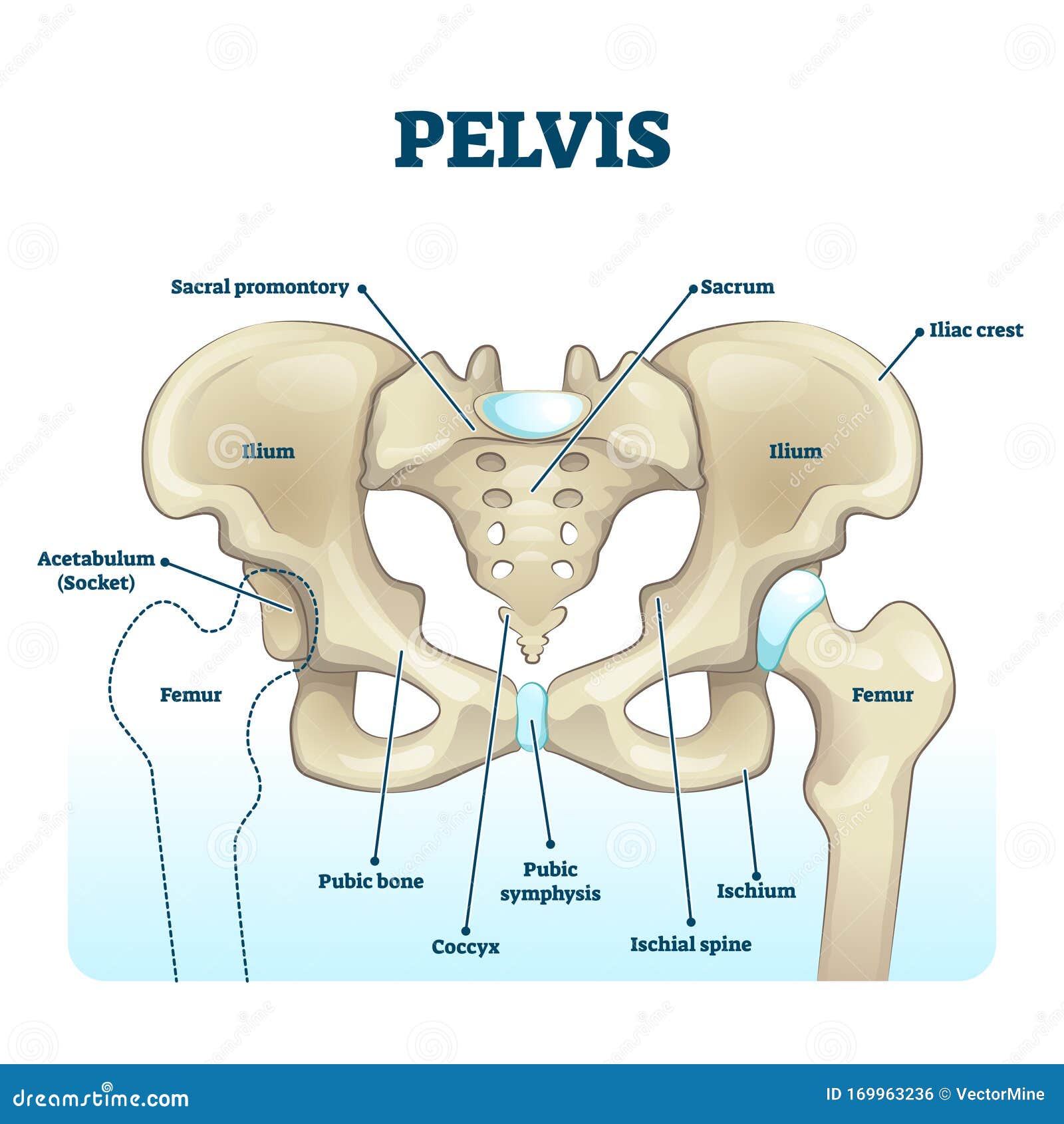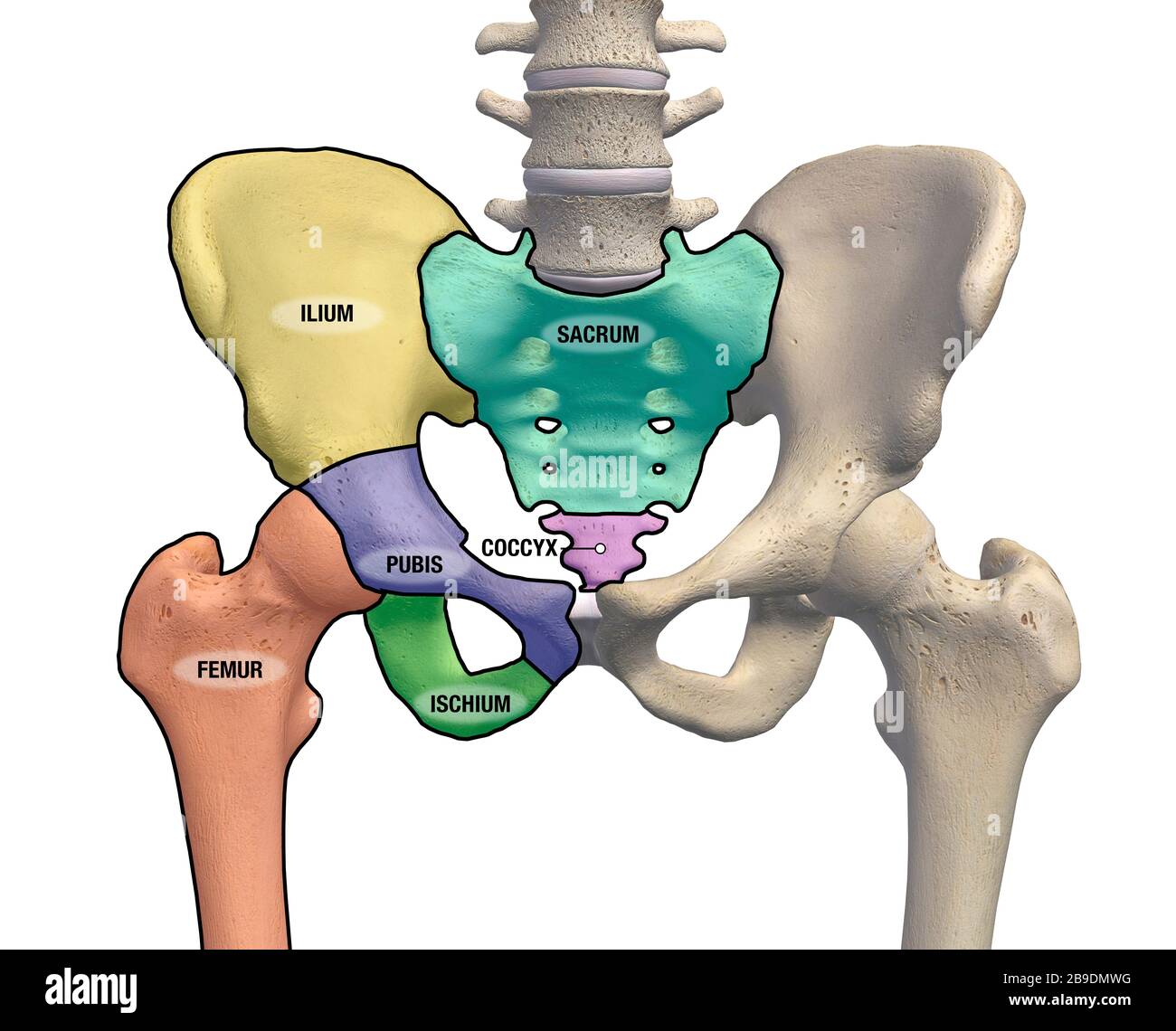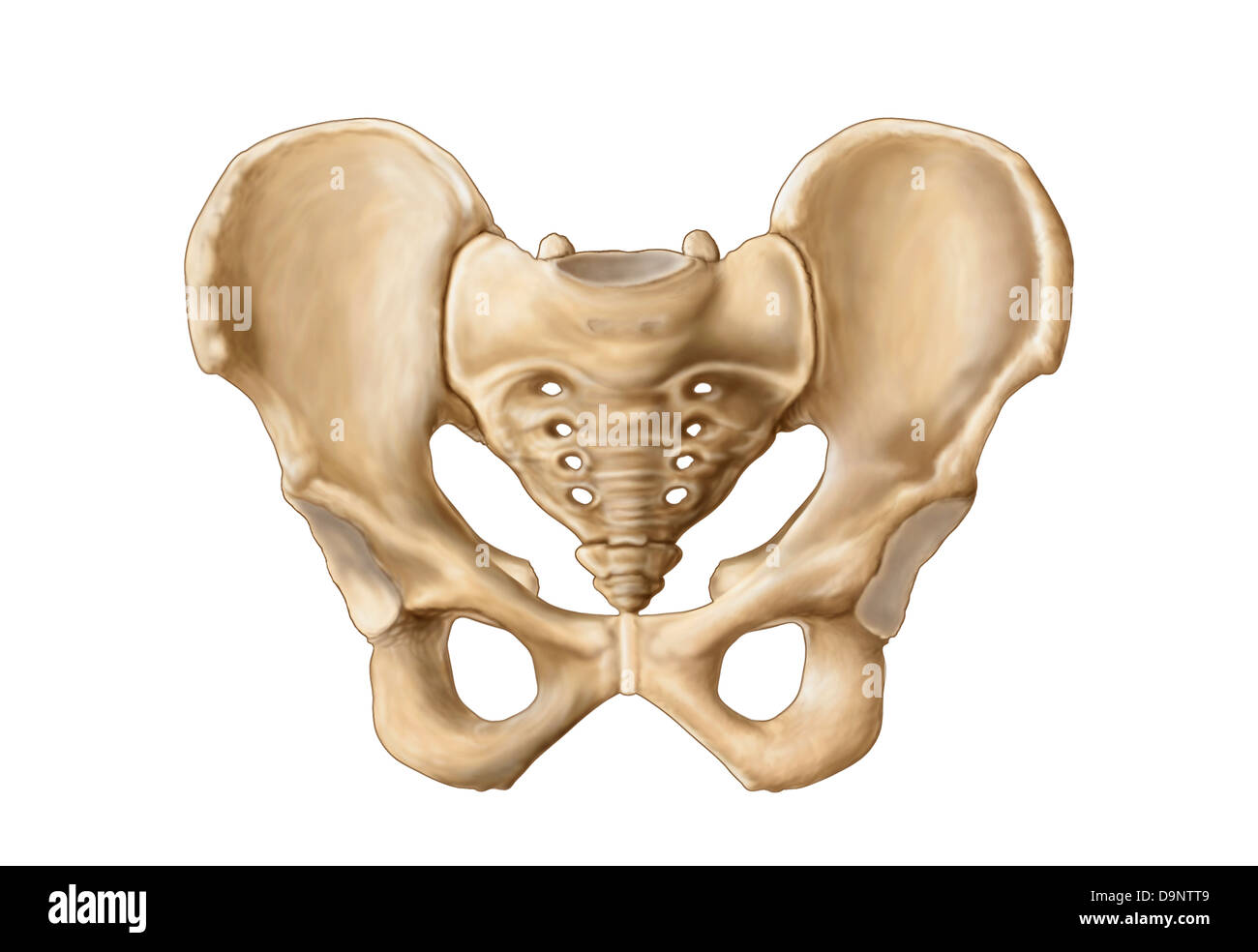Pelvic Bone - Your Body's Central Anchor
Table of Contents
- What is the Pelvic Bone, Anyway?
- Where Does the Pelvic Bone Sit?
- How Many Pelvic Bones Are There?
- What Does the Pelvic Bone Do for Us?
- Why is the Pelvic Bone so Important for Movement?
- The Pelvic Bone and Its Muscle Connections
- What is the Pelvic Cavity?
- Connecting the Body - The Pelvic Bone's Union
Have you ever stopped to think about the incredible foundation that holds your body upright, allows you to move, and keeps some of your most important internal bits safe? It’s something we often take for granted, but this central structure, your pelvic bone, truly does a lot of heavy lifting, literally. This bony arrangement is a remarkable piece of natural design, working hard every moment to support your daily activities, from simply standing to more energetic motions, and it's almost always there, quietly doing its job.
This part of your skeletal frame, often called the pelvic region, sits right at the base of your torso, forming a kind of bridge between your upper body and your lower limbs. It’s a crucial connector, providing a sturdy base for your core and giving your legs something solid to attach to. So, when you walk, run, or even just shift your weight, this area is actively involved, making sure you stay balanced and move with ease, you know?
What makes this area so special is how it brings together several distinct pieces of bone to create one cohesive, very strong unit. We’ll talk about what these individual parts are and how they all work in concert to give you the stability and freedom of motion you depend on. It’s a pretty clever setup, in fact, and understanding it just a little can give you a new appreciation for your own body’s design.
What is the Pelvic Bone, Anyway?
When folks talk about the "pelvic bone," they're usually referring to a collection of bones that form a kind of bowl-shaped structure at the very bottom of your body's main trunk. This collection sits right where your upper body ends and your legs begin. It’s basically the area between your stomach region and your upper legs, often just called the hip area by most people. This bony arrangement is a really important part of your overall body framework, providing a significant amount of support and protection. It’s pretty central to how you move and how your body stays put.
Think of it as a strong, protective basket, more or less, built to hold things and provide attachment points. This basin-like shape isn't just for looks; it has a very specific purpose. It’s quite literally the foundational support for everything above it, meaning your entire upper body relies on it. Plus, it acts as a strong anchor for a whole lot of powerful muscles that help you move your legs and keep your body steady. It's truly a central piece of your anatomy, actually, and it's a part of you that’s always working, even when you’re just sitting still.
Where Does the Pelvic Bone Sit?
The pelvic bone, or rather, the collection of bones making up your pelvis, is positioned right at the base of your torso. It’s the part of your body that connects your spine to your lower limbs. Imagine a point where your belly ends and your thighs start; that’s the general neighborhood of this important structure. It's not just a single bone, but a sturdy ring that forms the lower section of your body's central column, providing a solid link to your legs. So, when you think about where your legs meet your main body, you're pretty much thinking about where this structure lives.
This region is sometimes simply called the "pelvic area," and it's a place where a lot of different body parts come together. It's a bit like a central station, you know, where different lines meet. It supports the weight from above and transfers it downwards, allowing you to stand and walk. It’s a critical link in the chain of your skeletal system, ensuring that forces are distributed properly throughout your body. Without this central connection, standing upright and moving around would be a very different, if not impossible, experience, in fact.
How Many Pelvic Bones Are There?
When we talk about the pelvic bone as a whole, it's actually made up of three distinct bones that come together to form that sturdy, basin-like structure. It’s not just one big piece, but rather a carefully arranged set of components that work in harmony. These three parts are the hip bone, which is actually a pair, the sacrum, and the coccyx. Each of these has its own unique shape and role, but they all fit together to create the strong, supportive framework we rely on daily. So, it's not a single entity, but a team, in a way, collaborating to keep you going.
This arrangement allows for a combination of strength and a certain amount of flexibility, which is pretty vital for everyday activities. The way these bones join up creates a robust ring that can handle the pressures of walking, running, and carrying weight. It’s a very clever bit of biological engineering, honestly, how these individual pieces come together to form such a resilient and functional unit. Understanding these separate parts helps us appreciate the whole structure even more, giving us a better sense of how our bodies are put together.
The Hip Bone and its Role in the Pelvic Bone Structure
The hip bone, sometimes called the coxal bone or os coxae, is actually a pair of large, irregularly shaped bones that form the sides and front of the pelvic bone structure. You have one on your left side and one on your right, and together they create the main bulk of what people often refer to as their "hips." These two hip bones are really important because they connect directly to your lower limbs, giving your legs a place to swing freely while also providing a solid base for movement. They are, quite literally, the broad wings of this central structure, you know?
Each hip bone itself is actually formed from three smaller bones that fuse together during childhood, making it a single, very strong piece in adulthood. These broad, somewhat flattened bones are crucial for bearing the weight of your upper body. Think about how you sit; your weight often rests on parts of these bones. They also provide large surfaces for many muscles to attach, which is pretty essential for almost any movement you make with your legs or core. So, they're not just about sitting; they're about moving, too.
The Sacrum - A Key Pelvic Bone
The sacrum is a triangular-shaped bone located at the base of your spine, right between the two hip bones. It's basically a fusion of five smaller vertebrae that have grown together to form one solid piece. This bone is incredibly important because it acts as the central connecting point between your spine, which is your body's main support column, and the rest of your pelvic bone structure. It's a bit like the keystone of an arch, holding everything together at the back, so to speak.
This connection means the sacrum plays a direct role in transferring the weight from your upper body, down through your spine, and into your lower limbs. It’s a crucial weight-bearing component, ensuring that the forces from your torso are properly distributed. Without a strong sacrum, the entire structure would be far less stable. It also forms part of the back wall of the pelvic cavity, providing additional protection for the organs housed within. It's a truly vital part of your overall body framework, naturally, and it helps maintain your posture and balance.
The Coccyx - A Small but Present Pelvic Bone
Then there's the coccyx, which many people know as the tailbone. This is a very small, somewhat triangular bone located at the very bottom of your spine, just below the sacrum. It’s made up of a few small, fused vertebrae, usually three to five, that have become one tiny bone. While it might seem small compared to the other parts of the pelvic bone, it still has its own small but important roles, believe it or not. It’s the very end piece of your spinal column, after all.
Even though it’s tiny, the coccyx serves as an attachment point for several muscles and ligaments that are involved in supporting the pelvic floor and helping with various bodily functions. It also provides a little bit of support when you’re sitting down, especially if you lean back slightly. So, while it’s not a major weight-bearer like the sacrum or hip bones, it’s still a part of the complete pelvic bone structure, contributing to the overall integrity and function of the area. It's just a little piece, but it's there, and it does have a purpose.
What Does the Pelvic Bone Do for Us?
The pelvic bone structure performs a whole lot of important jobs for our bodies, far beyond just being a collection of bones. One of its main duties is to provide a very sturdy foundation for the weight of your upper body. Think about standing tall, or even just sitting up straight; your upper half has a certain heaviness, and it needs something solid to rest upon. Well, that’s where your pelvic bones truly shine, providing a strong base for all that sits above them, like your torso and everything within it, you know? They are, in a way, the quiet heroes holding things steady from below.
Beyond supporting weight, this bony basin also acts as a protective shield. It surrounds and keeps safe many of your vital internal organs that are located in the lower part of your abdomen and the pelvic area. These include parts of your digestive system, your bladder, and for women, the reproductive organs. So, it's not just about strength; it’s also about providing a safe home for some very important soft tissues. This protective function is pretty essential, actually, especially considering how delicate some of these organs are.
Why is the Pelvic Bone so Important for Movement?
The pelvic bone is incredibly important for movement because it acts as the central link between your body's core and your legs. These bones connect the main column of your body, your axial skeleton, to your lower limbs. This connection is what allows you to move your legs independently while still maintaining stability in your upper body. It's a pretty smart design, really, allowing for both motion and a solid base. Without this connection, walking, running, or even just shifting your weight would be practically impossible.
Because it links the upper body to the lower limbs, the pelvic bone plays a direct role in how forces are transferred throughout your body. When you take a step, the force from your foot pushing off the ground travels up your leg, through the pelvic bone, and then is absorbed or redirected by your torso. Similarly, when you lift something heavy, the strength often comes from your core, and that force is then channeled through the pelvic bone to your legs. It’s like a central pivot point for almost all your lower body movements, you know?
The Pelvic Bone and Its Muscle Connections
The pelvic bone is not just a passive support structure; it’s also a major attachment point for a huge number of muscles. Think about all the different movements you make with your core, your legs, and even your breathing. Many of these actions rely on muscles that are firmly connected to various parts of your pelvic bone. These connections are absolutely vital for everything from maintaining your posture to performing athletic feats. So, it’s a very busy hub for muscle activity, in fact.
These muscles include those that are specifically located within the pelvis itself, often referred to as the pelvic floor muscles, which are important for things like bladder control and stability. But it also includes many larger muscle groups that move your legs, like your glutes and hamstrings, and even muscles from your abdomen that help with core strength and breathing. This wide range of muscle attachments means the pelvic bone is central to nearly every physical action involving your lower body and core. It’s like a giant anchor for all the ropes that make your body move, you know?
What is the Pelvic Cavity?
Within the protective confines of your pelvic bone structure lies a space known as the pelvic cavity. This isn't just empty air; it's a vital area that houses and protects a number of your body's important internal organs. It’s essentially the area that sits between the solid framework of your pelvic bones and the lower part of your belly. Think of the pelvic bone as the outer shell, and the pelvic cavity as the inner chamber, more or less, where some very important things are kept safe.
The organs that reside in this space include parts of your large intestine, your bladder, and in women, the uterus and ovaries. This cavity provides a sheltered environment for these delicate organs, keeping them away from external bumps and impacts. It’s a pretty clever design, really, how the strong bone acts as a natural shield. So, when we talk about the pelvic bone, we’re not just talking about the bones themselves, but also the crucial space they create and protect, which is pretty essential for your overall well-being, naturally.
Connecting the Body - The Pelvic Bone's Union
One of the most impressive aspects of the pelvic bone is how it brings together different parts of your body, creating a unified and strong system. It truly is the place where your upper body meets your lower body, and where your main skeletal column connects to your limbs. The two hip bones, working with the sacrum and coccyx, form a complete ring that serves as a central hub for weight distribution and movement. This union is absolutely critical for standing, walking, and maintaining balance, you know?
This structure ensures that the forces generated by your upper body, like when you carry a backpack or stand upright, are effectively transferred down to your legs and feet. Similarly, when you push off the ground to jump or run, the forces from your legs are transmitted upwards through the pelvic bone to your core. It's a continuous chain of support and movement, and the pelvic bone is a major link in that chain. Its design allows for both stability and dynamic motion, a truly remarkable feat of natural engineering, honestly, enabling almost every physical action you perform.

Pelvis Bones

Pelvis and hip bones with major anatomical regions labeled on a white

Pelvic Bone High Resolution Stock Photography and Images - Alamy